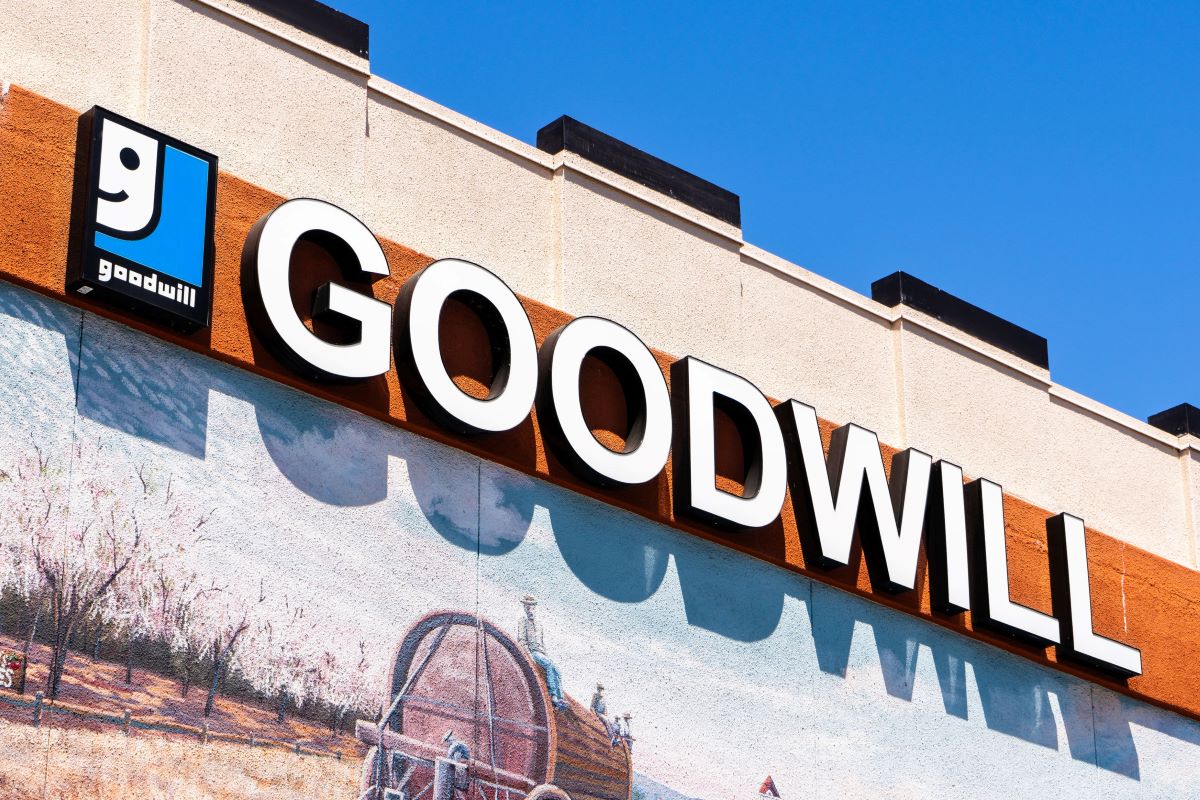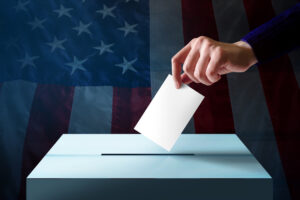How Goodwill combats misinformation
The nonprofit’s PR leader offers a masterclass in tackling fake news and malicious rumors.

How do you squash a rumor that won’t die?
In today’s hyper-connected society, anyone with a grudge and an internet connection can do serious damage to your company. It’s an issue you should be prepared to encounter. But what are the best ways to anticipate and respond to potentially harmful misinformation?
Lauren Lawson-Zilai, senior director of PR and national spokesperson for Goodwill Industries International (GII), shared comprehensive crisis comms guidance during a recent session for Ragan’s Crisis Leadership Network.
Lawson-Zilai, a member of Ragan’s Crisis Leadership Network, shared how the nonprofit giant has dealt with—and continues to deal with—viral rumors that persist about Goodwill. One particularly stubborn bit of misinformation you may have seen floating around online is called “Think Before You Donate.” It’s a bogus, wildly untruthful graphic that initially spread as a chain letter and now continues to worm its way through the world thanks to the “magic” of social media.
How do you stop such a hydra of misinformation? Lawson-Zilai says Goodwill has taken the following steps:
- Writing posts for Snopes, FactCheck and the Ad Council to correct falsehoods.
- Holding conversations with other nonprofits that were slandered in the original viral graphic.
- Consistently communicating with Facebook’s legal, communications and public policy teams to crack down on distribution of fake news.
- Reaching out to organizations such as Media Matters for America and the News Literacy Project for assistance.
- Leveraging media relations to overcome myths with truth.
- Requesting corrections wherever lies are published.
- Encouraging ambassadors to write blogs in support of Goodwill.
- Engaging with Social Driver, a firm that has expertise in social media strategy, to develop a game plan, create sample content and provide training for Goodwill organizations across the U.S. and Canada.
- Presenting Goodwill’s work to groups and coalitions, such as PRSA and the National Digital Roundtable, to build back community trust.
Goodwill has also created a landing page that combats false rumors on its website, and many of its local Goodwill organizations’ websites have published similar pages as well. Lawson-Zilai says the proliferation of digital media has compelled the organization to get more “assertive” toward tackling rumors head-on, as opposed to ignoring slander and hoping it fades away. Remaining silent tends to make viral crises worse.
Ensuring consistency, and fighting the good fight
Keeping a cohesive voice is no easy task when you have more than 140,000 employees and 156 autonomous organizations to keep in the loop. To ensure consistency, GII created digital assets for its network of local Goodwill organizations to use at their discretion, though guidelines were established to use approved templates and images from “Goodstock,” GII’s internal photo library. GII’s “MyGoodwill” intranet also houses turnkey crisis comms messaging, including talking points, holding statements and an “issues management guide.”
“Every Goodwill is autonomous and has its own social media channels, so we wanted to create a single, unified campaign against falsehoods,” Lawson-Zilai says. This calls for help from the very top.
Goodwill encourages its leaders to use their online clout to help dispel fallacies. The charity leans heavily on LinkedIn—and preps execs to craft heartfelt LinkedIn Pulse pieces with headlines like, “Spread love this holiday season, not rumors” and “Perception vs. reality: My why.” No bland, boilerplate copy here.
Goodwill hasn’t had much luck getting Facebook to expunge the “Think Before You Donate” graphic, but it continues to exhort the company to actively remove misinformation from its platform. It also continues to invest in Facebook ads that counteract false narratives and show the organization’s mission in action.
Hugging your haters as best you can
What about criticism and negative comments online? Lawson-Zilai cites Jay Baer’s influential “Hug Your Haters” tome, which says: “Answering customer complaints can recover customers and cause them to rush to your defense and actually spend more money with you over time.” It also states that 70% of people will change their mind if you respond with humility, empathy and civility.
To formulate effective responses to social media critiques, Lawson-Zilai says to:
- Establish guidelines for how you plan to respond to online criticism.
- Develop allies who have clout and credibility, not just insipid or uninspired talking heads.
- Celebrate wins.
- Celebrate complaints, too, because they often help you improve.
If you’re the one who’s responsible for dealing with trolls and digital grumps, Lawson-Zilai says to proceed thoughtfully and with great care. She offers these suggestions to prevent making matters worse:
- Breathe, and take a moment before you start typing.
- Thank them. The Goodwill team says, “Be like ducks on water. You can be struggling under the water, but on the surface you should be graceful, smooth and gracious.”
- Correct inaccuracies.
- Give a path for follow up.
- Respond three times. Beyond that, make like “Frozen” and let it go. (Also, don’t bother engaging with vulgar, abusive jerks; you don’t have to hug them.)
It takes a village to stem the tide of fake news, so it’s also crucial to equip allies to counter lies and fabrications. Employee ambassador programs are great, Lawson-Zilai says, though you should train your advocates on key messaging points, ensure they know the protocol for elevating complaints and make crucial information accessible to them. In addition, you might consider providing spokesperson and media training to bolster allies’ skills. You can offer virtual instruction to make people aware of bubbling rumors or recent run-ins folks have encountered online.
Measuring success
Lawson-Zilai shares how Goodwill tracks its progress in the fight against fake news:
Reach of messaging. The organization measures the reach of content addressing malicious rumors as well as shares of owned media content produced (such as LinkedIn Pulse articles).
Engaging the right people. It tracks raw engagements on content, anecdotal engagements (such as people refuting rumors on their own), website and social media mentions, and influencers spreading the right messages.
Sentiment. How many people are talking negatively (vs. positively) about the organization? How many are talking about Goodwill stores and services rather than baseless rumors?
Goodwill uses Cision and Talkwalker to monitor online conversations. Lawson-Zilai says Talkwalker can even track how images are being shared on different channels, which has proved useful in monitoring how and where “Think Before You Donate” misinformation is spreading. But even the best technology platforms can only take you so far. Lawson-Zilai also engaged with Social Driver to provide a human touch and much-needed context to these metrics.
Conversions. Goodwill measures web traffic to its site—especially to its myth-busting landing page—as well as LinkedIn Pulse hits and visits to local Goodwills’ sites.
Another thorny issue
Lawson-Zilai shared another viral PR headache Goodwill continues to deal with. In 2017, a Facebook user posted an accusation that Goodwill refused to help a gentleman with special needs. The post, which was misleading and ill-informed, blew up and caused a flood of complaints and ugly discourse.
Goodwill responded with a statement clarifying the matter and submitted corrections to AP Fact Check, The New York Times’ Daily Distortions and Politifact. It’s an ongoing battle for truth that still rages today—with new users reposting the original story as if they wrote it themselves.
“You have to continue to be aggressive and assertive to tell your narrative,” Lawson-Zilai says. Otherwise, uninformed social media denizens will gladly do it for you.
To help mitigate the negative impact of misinformation that could harm your company or industry, she shares tips on creating your own viral rumor management strategy:
- Maintain strong comms built around your core values.
- Train key staff in verification methods. Make use of organizations such as First Draft News to educate and empower your team.
- Be transparent. “And be prepared to show your methodology,” Lawson-Zilai says.
- Be consistent with branding, and package your material in an identifiable way so people recognize it.
- Don’t just regurgitate what’s already out there. Instead, strive to provide original, engaging storytelling.
- Invest in relationships with trusted media outlets.
Unfortunately, so long as there is an internet, these sorts of misinformation problems will never fully go away. So, communicators should prepare accordingly.







